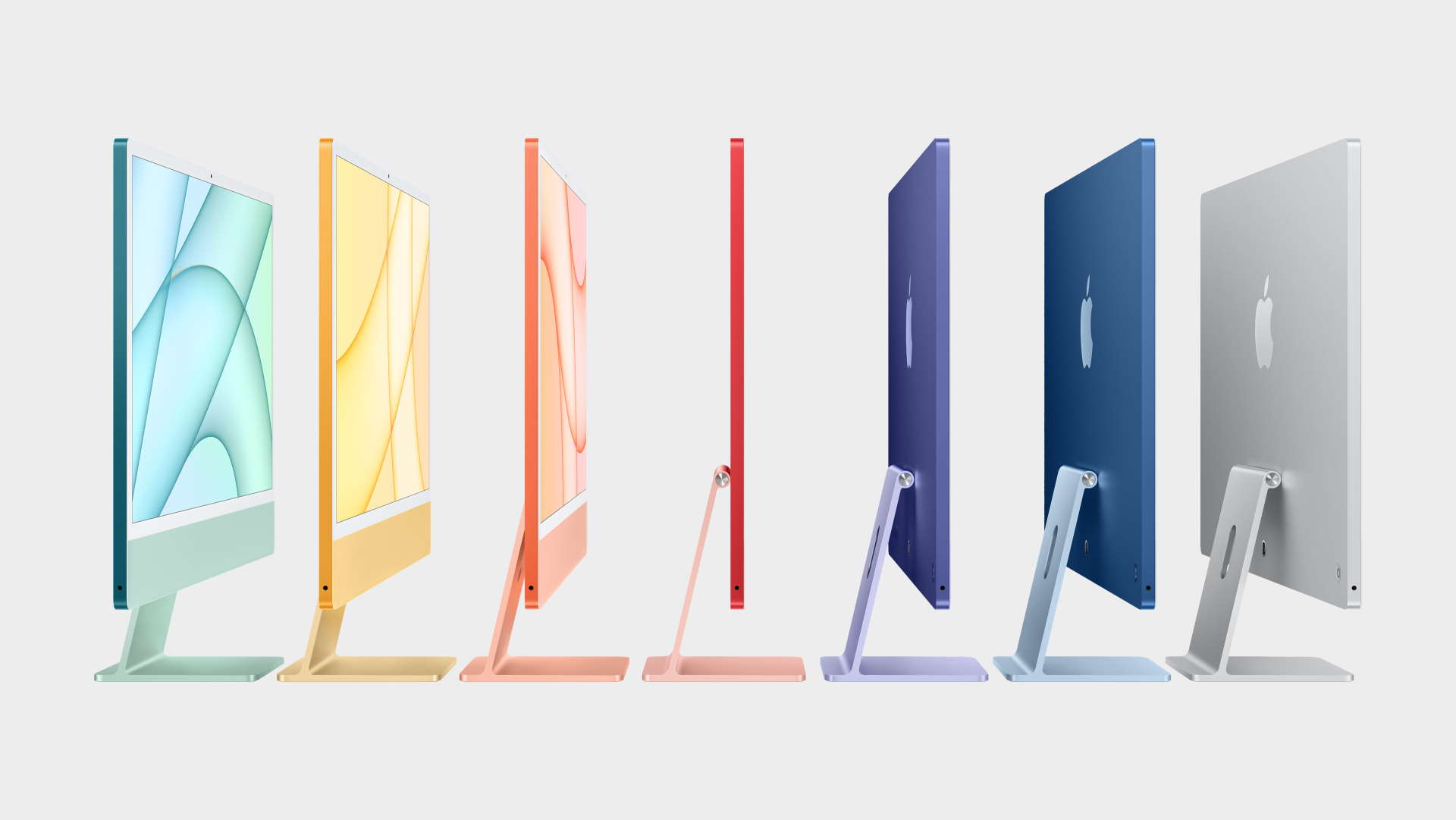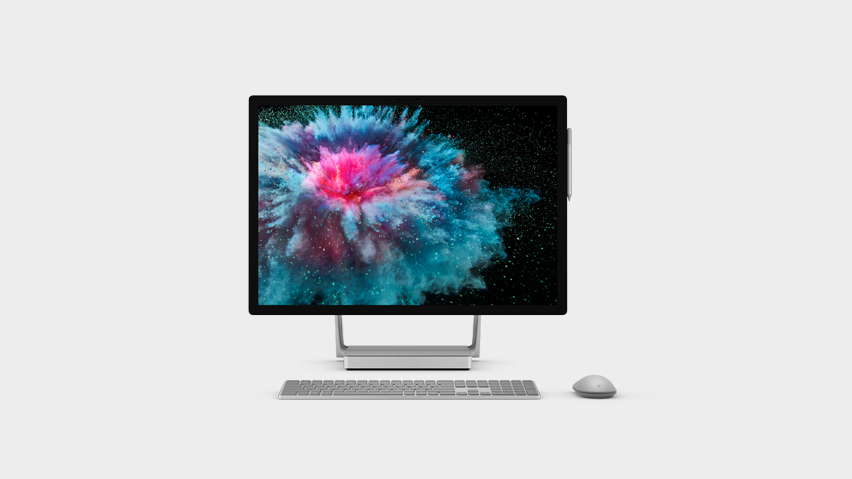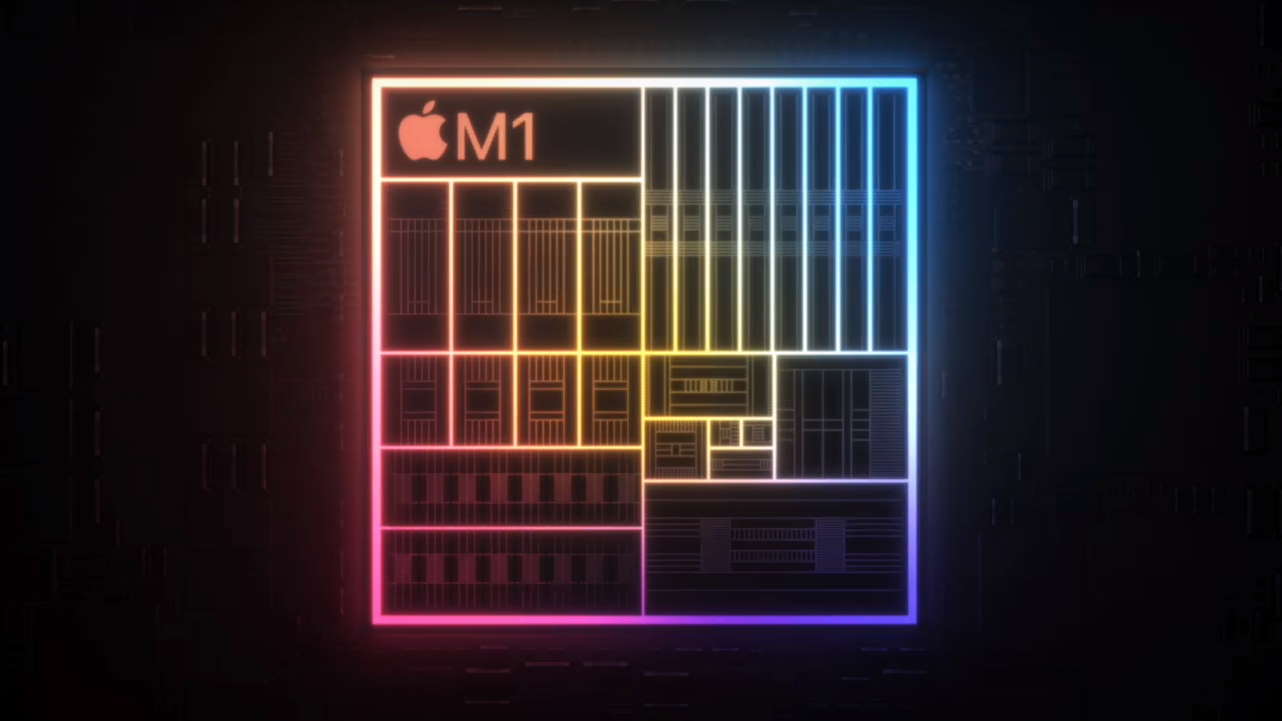The new iMac looks great, but it's what's inside that counts for PC gaming
The new Apple machine is emblematic of a PC gaming future where x86 isn't the only fruit.

Apple has brought it upon itself, it's practically begged normal human beings to rail against its elitist leanings. And while I'm still of the opinion that Macs are computers for people who hate computers, I don't agree with the wave of hate being leveled at its new machines; I think the new M1-powered iMacs look rather lovely. What's more I think they're emblematic of a potentially seismic shift in computing and, perhaps more interestingly, for gaming PCs.
The general reasoning behind many of the complaints about the new ultra-slim 2021 iMacs is exactly about their slight design, and why that might be bad or at least uninspired. After all, you don't need a desktop computer to be slim, less so if it's an all-in-one machine where you're just going to be looking at the screen anyways.
The low-power Apple M1 processor, with its impressively powerful ARM-based cores, is what has allowed Apple to create a desktop machine that's just 11.5mm thick. Sure, it's essentially a laptop that's all screen and no keyboard, but for the places you're going to find an iMac that's fine. They're machines that are meant to be stylishly unobtrusive in a design studio or artist's workshop.
That mobile origin doesn't mean you can just hide the svelte M1 SoC behind the screen and still nail an 11.5mm aesthetic with the rest of its feature set. And that means the new iMac isn't quite a big iPad Pro on a stand; it has a large 'chin' below the screen, an extension of the screen's chassis which houses its ARM-based electronics.
That big chin, and relatively chunky white bezels around the 4.5K Retina display panel, have had people suggesting Apple has lost its design mojo, potentially ceding leadership on that front to Microsoft and its Surface Studio.
I mean, naaaaaaaah. Have you seen the Surface Studio? It looks like some old Noctua heatsink that someone's strapped a glossy screen on top of. And it's not like that's got particularly thin bezels either, they're just shiny black instead of white.

Personally I'm into the ultra-minimalist design of the new iMac. And I'm not really much of an Apple fan. I guess you could say 'I'm a PC', but I really hate those old ads and the ill-advised modern redux.
The biggest gaming news, reviews and hardware deals
Keep up to date with the most important stories and the best deals, as picked by the PC Gamer team.
But I do totally appreciate the i2021 Mac style, aping the classic iMac aesthetic, while housing new, relevant features that speak to the new way we're working and where iMac's are being used. The new 1080p webcam and funkier speaker array are all results of the working-from-home world we're living in right now, and Apple has dialed into that in a big way.
On the PC we don't often see the panache that Apple imbues its products with, though thankfully that is changing, and the introduction a few years back of the Razer Blade and Corsair One brought us some genuine PC style icons. Sadly elsewhere we're still getting the overly angular, overly aggressive 'gamer' aesthetic that feels increasingly played out.
There are some more legitimate concerns about the new iMac away from the visual design, however, and that's because of Apple's decision to only include a quartet of USB Type-C connectors (with Thunderbolt support on two of them).

No Type-A, no LAN, no nothing; it's pretty damned restrictive, and that's the Apple I've grown to hate. The dictatorial company which decides how you use your machine, removing choice from the equation and demanding a hell of a price premium for the privilege.
But the M1-powered iMac is also a bit of a herald for the potential future of PCs too. Apple's proprietary ARM-based processor has shown its power and shown the possibility of computing away from the dominance of the x86 architecture. That's something Nvidia has recently focused on, and not just because it's still desperately trying to push through its beleaguered purchase of the Cambridge tech company.
Nvidia and MediaTek (one of the largest creators of ARM-based silicon) have recently gone public with a partnership that is seeing GeForce GPUs being optimised to work with the ARM architecture for gaming and other workloads. The intimation is that future gaming laptops could run with Nvidia's powerful mobile GPUs and still offer PC gaming performance on ARM CPUs thanks to the sort of x86 emulation that Apple's M1 silicon has demonstrated.

And if we're genuinely talking about future Nvidia ShieldBooks using ARM chips then we could be looking at very different form factors from laptops and future desktop machines. Okay, the GeForce GPU is likely the more power hungry, and heat-generating component of a modern gaming laptop, but pairing one with a power sipping CPU can only help.
In the PC world we've been tied to the x86 architecture for so long it feels scary that we might be moving away from that, but more choice of componentry can only be a good thing. Something that has been highlighted by the monstrous chip shortage we find ourselves in today. If there are more eventual avenues to find silicon to fill out our new gaming PCs then I'm into it.
Hell, we might even see some skinny GeForce-powered all-in-ones too.

Dave has been gaming since the days of Zaxxon and Lady Bug on the Colecovision, and code books for the Commodore Vic 20 (Death Race 2000!). He built his first gaming PC at the tender age of 16, and finally finished bug-fixing the Cyrix-based system around a year later. When he dropped it out of the window. He first started writing for Official PlayStation Magazine and Xbox World many decades ago, then moved onto PC Format full-time, then PC Gamer, TechRadar, and T3 among others. Now he's back, writing about the nightmarish graphics card market, CPUs with more cores than sense, gaming laptops hotter than the sun, and SSDs more capacious than a Cybertruck.

